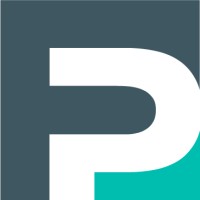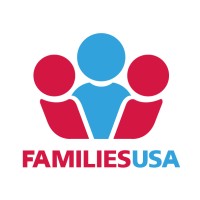Company Details
capolicylab
48
5,377
921
capolicylab.org
0
CAL_2679377
In-progress

California Policy Lab Company CyberSecurity Posture
capolicylab.orgThe California Policy Lab is an institute at the University of California that generates research insights for government impact. Through hands-on partnerships with government agencies, CPL performs rigorous research across issue silos and builds the data infrastructure necessary to improve programs and policies that millions of Californians rely on every day.
Company Details
capolicylab
48
5,377
921
capolicylab.org
0
CAL_2679377
In-progress
Between 700 and 749

 CPL Global Score (TPRM)
CPL Global Score (TPRM)XXXX



No incidents recorded for California Policy Lab in 2025.
No incidents recorded for California Policy Lab in 2025.
No incidents recorded for California Policy Lab in 2025.
CPL cyber incidents detection timeline including parent company and subsidiaries

The California Policy Lab is an institute at the University of California that generates research insights for government impact. Through hands-on partnerships with government agencies, CPL performs rigorous research across issue silos and builds the data infrastructure necessary to improve programs and policies that millions of Californians rely on every day.


Fay-Penn Economic Development Council's mission is to maintain and increase employment opportunities (jobs) in Fayette County in an effort to improve the quality of life for all of its residents. This mission is met through a comprehensive strategy of specific #economicdevelopment objectives. The or

Somos un centro de investigación – acción comprometido con el desarrollo de Guatemala y la región, conformado por profesionales íntegros que realizan estudios y consultorías con rigurosidad técnica para incidir en políticas públicas. El énfasis es en las áreas económica, social y de seguridad. Somo

La Sociedad Estatal de Participaciones Industriales (SEPI) desarrolla su actividad a través de tres grandes líneas de trabajo: - Como primer holding público empresarial de España impulsa el desarrollo y crecimiento de sus empresas, con el doble objetivo de lograr su rentabilidad económica y social.

Founded in 1919, Agricultural Council of California is a member-supported organization advocating for more than 15,000 farmers across California, ranging from farmer-owned businesses to the world's best-known brands. Ag Council works tirelessly to keep its members productive and competitive, so that

Established in 2014, the UK Regulators Network (UKRN) continues to enable effective co-operation between regulators on important issues. With a credible culture of collaboration and learning, UKRN encourages greater efficiency and improved outcomes for consumers, businesses, and the economy, expl

For more than 30 years, Families USA has been the trusted voice for America’s health care consumers. We believe that health care should be comprehensive, affordable, and high-quality for everyone. This belief informs our policy, research, and advocacy work. As a nonpartisan, nonprofit organization,
.png)
These companies block online threats, assess industry vulnerabilities and increase education and awareness about cybersecurity.
SB 53 enacts world-leading AI safety disclosure requirements, creates a public cloud compute cluster to foster democratized AI innovation,...
Report finds unemployment claims in Los Angeles increased by 12-17% due to Palisades and Eaton fires. Low-wage industries and less educated...
A group of heavily Democratic policy influencers supported social media controls at higher rates than voters at large.
Dana Vanderford of the Los Angeles County Department of Health Services' Homelessness Prevention Unit shares how data is being used to...
The California Policy Lab found that LA County's Homelessness Prevention Unit is finding success with a new predictive analytics model.
Renowned for its excellence and innovation in law and technology, UC Berkeley Law leads the way in AI.
In Los Angeles, the Homelessness Prevention Program uses predictive AI to identify individuals and families at risk of becoming homeless,...
The founding director of the CITRIS Policy Lab and UC Berkeley associate research professor demystifies emerging technology to help...

Explore insights on cybersecurity incidents, risk posture, and Rankiteo's assessments.
The official website of California Policy Lab is http://www.capolicylab.org.
According to Rankiteo, California Policy Lab’s AI-generated cybersecurity score is 743, reflecting their Moderate security posture.
According to Rankiteo, California Policy Lab currently holds 0 security badges, indicating that no recognized compliance certifications are currently verified for the organization.
According to Rankiteo, California Policy Lab is not certified under SOC 2 Type 1.
According to Rankiteo, California Policy Lab does not hold a SOC 2 Type 2 certification.
According to Rankiteo, California Policy Lab is not listed as GDPR compliant.
According to Rankiteo, California Policy Lab does not currently maintain PCI DSS compliance.
According to Rankiteo, California Policy Lab is not compliant with HIPAA regulations.
According to Rankiteo,California Policy Lab is not certified under ISO 27001, indicating the absence of a formally recognized information security management framework.
California Policy Lab operates primarily in the Public Policy Offices industry.
California Policy Lab employs approximately 48 people worldwide.
California Policy Lab presently has no subsidiaries across any sectors.
California Policy Lab’s official LinkedIn profile has approximately 5,377 followers.
No, California Policy Lab does not have a profile on Crunchbase.
Yes, California Policy Lab maintains an official LinkedIn profile, which is actively utilized for branding and talent engagement, which can be accessed here: https://www.linkedin.com/company/capolicylab.
As of November 28, 2025, Rankiteo reports that California Policy Lab has not experienced any cybersecurity incidents.
California Policy Lab has an estimated 1,024 peer or competitor companies worldwide.
Total Incidents: According to Rankiteo, California Policy Lab has faced 0 incidents in the past.
Incident Types: The types of cybersecurity incidents that have occurred include .
.png)
Angular is a development platform for building mobile and desktop web applications using TypeScript/JavaScript and other languages. Prior to versions 19.2.16, 20.3.14, and 21.0.1, there is a XSRF token leakage via protocol-relative URLs in angular HTTP clients. The vulnerability is a Credential Leak by App Logic that leads to the unauthorized disclosure of the Cross-Site Request Forgery (XSRF) token to an attacker-controlled domain. Angular's HttpClient has a built-in XSRF protection mechanism that works by checking if a request URL starts with a protocol (http:// or https://) to determine if it is cross-origin. If the URL starts with protocol-relative URL (//), it is incorrectly treated as a same-origin request, and the XSRF token is automatically added to the X-XSRF-TOKEN header. This issue has been patched in versions 19.2.16, 20.3.14, and 21.0.1. A workaround for this issue involves avoiding using protocol-relative URLs (URLs starting with //) in HttpClient requests. All backend communication URLs should be hardcoded as relative paths (starting with a single /) or fully qualified, trusted absolute URLs.
Forge (also called `node-forge`) is a native implementation of Transport Layer Security in JavaScript. An Uncontrolled Recursion vulnerability in node-forge versions 1.3.1 and below enables remote, unauthenticated attackers to craft deep ASN.1 structures that trigger unbounded recursive parsing. This leads to a Denial-of-Service (DoS) via stack exhaustion when parsing untrusted DER inputs. This issue has been patched in version 1.3.2.
Forge (also called `node-forge`) is a native implementation of Transport Layer Security in JavaScript. An Integer Overflow vulnerability in node-forge versions 1.3.1 and below enables remote, unauthenticated attackers to craft ASN.1 structures containing OIDs with oversized arcs. These arcs may be decoded as smaller, trusted OIDs due to 32-bit bitwise truncation, enabling the bypass of downstream OID-based security decisions. This issue has been patched in version 1.3.2.
Suricata is a network IDS, IPS and NSM engine developed by the OISF (Open Information Security Foundation) and the Suricata community. Prior to versions 7.0.13 and 8.0.2, working with large buffers in Lua scripts can lead to a stack overflow. Users of Lua rules and output scripts may be affected when working with large buffers. This includes a rule passing a large buffer to a Lua script. This issue has been patched in versions 7.0.13 and 8.0.2. A workaround for this issue involves disabling Lua rules and output scripts, or making sure limits, such as stream.depth.reassembly and HTTP response body limits (response-body-limit), are set to less than half the stack size.
Suricata is a network IDS, IPS and NSM engine developed by the OISF (Open Information Security Foundation) and the Suricata community. In versions from 8.0.0 to before 8.0.2, a NULL dereference can occur when the entropy keyword is used in conjunction with base64_data. This issue has been patched in version 8.0.2. A workaround involves disabling rules that use entropy in conjunction with base64_data.

Get company history
















Every week, Rankiteo analyzes billions of signals to give organizations a sharper, faster view of emerging risks. With deeper, more actionable intelligence at their fingertips, security teams can outpace threat actors, respond instantly to Zero-Day attacks, and dramatically shrink their risk exposure window.
Identify exposed access points, detect misconfigured SSL certificates, and uncover vulnerabilities across the network infrastructure.
Gain visibility into the software components used within an organization to detect vulnerabilities, manage risk, and ensure supply chain security.
Monitor and manage all IT assets and their configurations to ensure accurate, real-time visibility across the company's technology environment.
Leverage real-time insights on active threats, malware campaigns, and emerging vulnerabilities to proactively defend against evolving cyberattacks.




